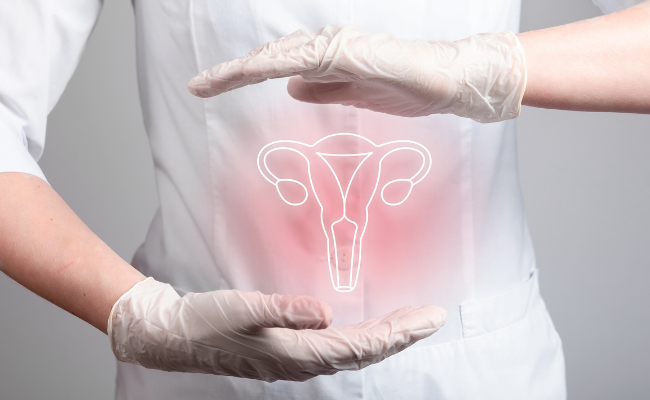PCOS Belly Uncovered, Symptoms Explained
PCOS, short for Polycystic Ovary Syndrome, is a hormonal imbalance common in most women of reproductive age.
CDC (Center for Disease Control and Prevention) has reported that up to 12 percent of women in America who are of childbearing age have PCOS.
This condition is primarily associated with fertility issues and irregular menstruation. However, a common symptom in women with this condition is excess belly fat, also known as ‘PCOS belly.’
Some women with “PCOS belly” are only bothered about losing this abdominal weight because they cannot wait to feel sexy again.
However, putting aside the desire to feel good about your looks, this condition can result in serious health complications, such as type-2 diabetes, cardiovascular disease, or a high rate of insulin resistance.
Understanding Polycystic Ovary Syndrome (PCOS)
All you need to know about PCOS, including its causes and how you can manage it, will be discussed in this article. Keep reading.
What is PCOS?
Polycystic ovary syndrome is a hormonal condition characterized by symptoms like; irregular menstruation, increased levels of male hormones, cysts in the ovary, and belly fat. This condition is common in women who are of age to give birth.
In a woman’s body are female hormones (estrogen and progesterone) and male hormones (testosterone), and there is usually a balance between these hormones.
However, with PCOS, the levels of male hormones increase, resulting in irregular menstrual cycles, unwanted hair growth, acne, and other symptoms.
Once every month, a woman ovulates, releasing a mature egg, but the hormonal imbalance caused by PCOS prevents the egg from getting matured, so a cyst is formed.
Causes of PCOS
Research has yet to identify the exact cause of PCOS, but many believe it to be related to insulin resistance. It occurs when the body’s cells become unresponsive to insulin, increasing insulin levels in the bloodstream.
This case, in turn, can cause the ovaries to produce more testosterone, resulting in hormonal imbalances and other PCOS belly symptoms.
Physical Symptoms of PCOS Belly
The experience of PCOS varies from one woman to the other, likewise the symptoms. In addition to irregular cycles and ovarian cysts, some other symptoms of PCOS belly are;
- Infertility
- Constipation and diarrhea
- Abdominal weight gain (PCOS belly)
- Acne
- Hirsutism (excess hair growth)
- Pelvic pains
- Premenstrual syndrome
Diagnosis of PCOS
The diagnosis of PCOS requires a combination of certain factors, which include;
Medical History
During the consultation, the doctor will inquire about your menstrual cycle and if you have any health conditions. In addition, the doctor might also ask if your family has any history of the syndrome.
Physical Examination
A doctor will examine to look for any physical symptoms of PCOS, like acne, hirsutism, and abdominal weight gain.
Blood Tests
Some blood tests may be required to check hormone levels, testosterone, luteinizing hormone (LH), follicle-stimulating hormone (FSH), and insulin. If your hormone levels are abnormal, that could indicate this ovarian condition.
Pelvic Ultrasound
An ultrasound aims to check for cysts in the ovaries and any underlying conditions that could result in similar symptoms.
Your doctor may run some additional tests as a precaution to eliminate other conditions like thyroid disorders or adrenal gland disorders.
Not every woman with PCOS will show all the symptoms. Some might show a few, and for some, none at all. PCOS diagnosis is based on a combination of the above-listed factors and has to be done by a qualified healthcare provider.
Treating PCOS Belly
One of the symptoms of PCOS is abdominal weight gain, also known as “PCOS belly.” This type of belly fat can be challenging to lose, but by following the steps below, you can effectively treat it and experience positive results.
Healthy eating
Eating healthy food is one effective way to manage PCOS belly. Eat more nutrient-dense foods like vegetables, fruits, lean protein, and healthy fats. Cut down on your intake of sugary and processed foods.
Exercise
You should include exercise in your daily routine. Your target should be at least 30 minutes of moderate-intense exercise like; brisk walking, riding a bike, dancing, and hiking.
Exercise is crucial for treating PCOS because it can help improve insulin sensitivity, reduce inflammation, and boost weight loss.
Manage stress
Stress can cause hormonal imbalance. Thus, you should engage in stress-relieving techniques such as yoga, meditation, and deep breathing.
Try medications
Take prescribed medicines like birth control pills to help manage PCOS symptoms. However, you must not take medications without consulting a qualified healthcare provider.
Get enough sleep
Sleep helps regulate the body’s hormones. You should get at least 7-8 hours of sleep every night.
It is crucial to remember that treating a PCOS belly involves a multifaceted strategy. Long-term success depends on adopting new lifestyle habits.
These healthy habits include; maintaining a balanced diet, engaging in regular exercise, and treating underlying hormonal imbalances. It would also help to speak with your healthcare professional for personalized guidance and care.
Final Thoughts
Polycystic Ovary Syndrome (PCOS) is a usual hormonal condition in women of childbearing age. This condition can cause infertility, disrupt the menstrual cycle and cause excess hair growth on the face and body.
One of the most average symptoms of PCOS is the development of a “PCOS belly,” characterized by excess weight around the abdomen.
Losing “PCOS belly” can be very difficult. However, dedication, healthy eating, and some lifestyle changes can help you eliminate excess belly fat and improve your overall well-being.
For more interesting news and articles, check Inquirer.net.





